Latest Developments In Southern Lebanon Front On October 24; Heavy Fighting Continues On Five Axes (Map)
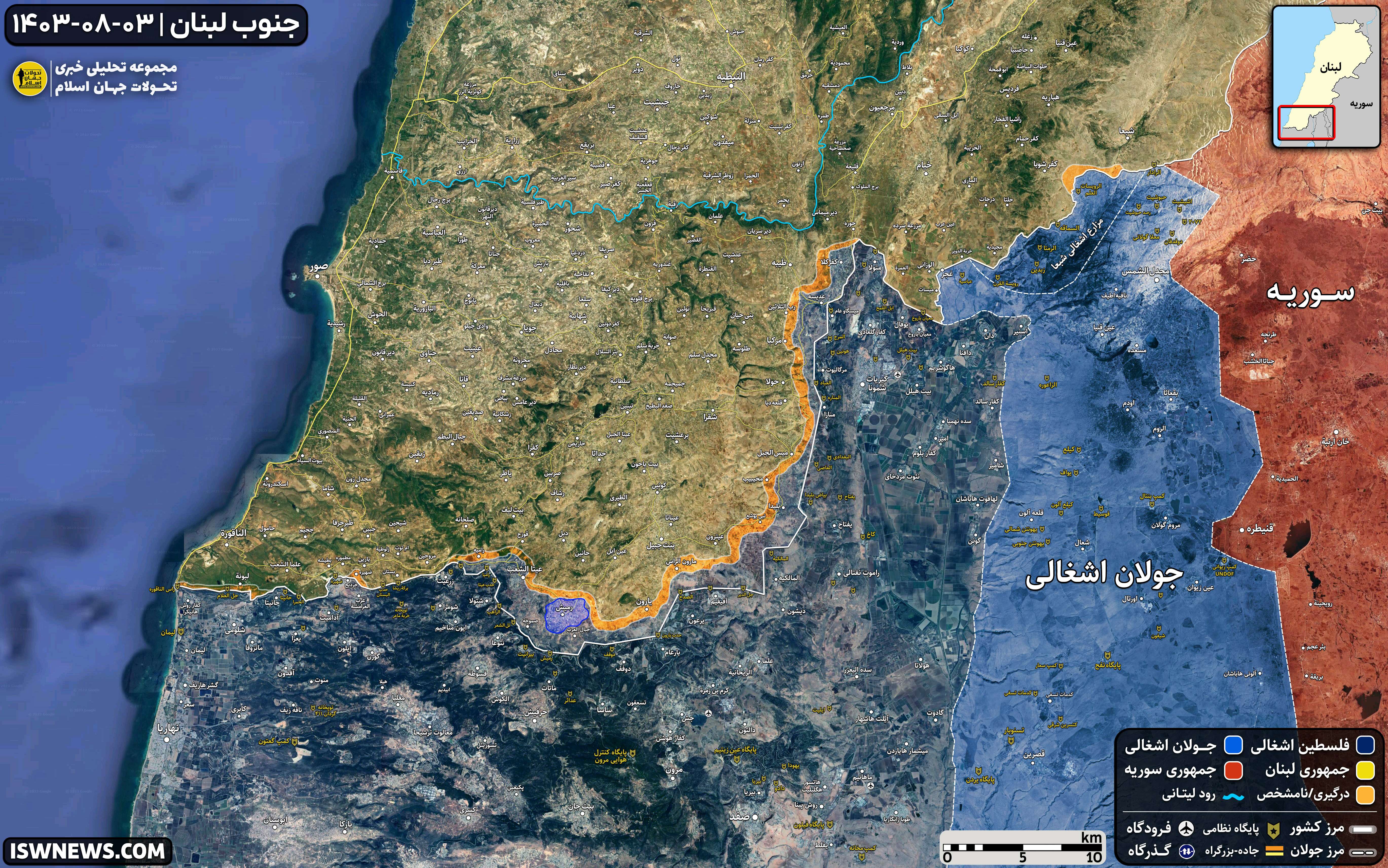
Fighters of the Lebanese resistance movement Hezbollah and military forces of the Israeli regime continue ground battles in southern Lebanon and northern occupied Palestine across five axes, from the Shebaa Farms to the Mediterranean Sea coast. The Israeli forces have launched wide-ranging and heavy strikes to advance on the Taybeh-Markaba axis and break into the towns of Aitaroun and Ayta ash Shab.
Hezbollah fighters are currently engaged in heavy combat after 23 days of fighting on five fronts. The resistance fighters have been engaged in fierce clashes from Naqoura city to Marwahin town, from Ramyeh village to east of Aitaroun town, from southern Blida village to northern Houla village, from southern Markaba village to al-Ghajar village, and from al-Ghajar to the Shebaa Farms with the 146th Brigade, the 36th Brigade, the 91st Brigade, the 98th Brigade and the 210th Brigade of the Israeli army respectively.
Hezbollah’s missile and air units continue to target military centers and headquarters along the Lebanon-Palestine border as well as inside the occupied areas of northern occupied Palestine, with an increase in attacks on the occupied cities of Tel Aviv, Haifa, Tiberias, and Safed. The Lebanese resistance movement’s air defense units have also intensified their response against Israeli fighter jets as well as reconnaissance and combat drones, increasing the number of downed Israeli drones to 11.
Since the onset of the ground operation, the Israeli forces have destroyed a significant number of villages, including Mhaybib, Blida, Ramieh, Kfarkala, Al-Udaysah, and Yaroun, but have not stationed military forces or equipment in these areas. The occupation and control of these regions are not among the Israeli army’s objective, primarily due to Hezbollah’s superiority in ground combat. Instead, destruction through bombings and heavy airstrikes is being prioritized to create a so-called security belt along the border areas and mitigate threats from the Lebanese resistance in the occupied settlements and border bases.
Shebaa Farms Front: As expected, the primary objective of the Israeli 210th Brigade in this front is to enter Shebaa town and Kfarchouba village. Advancing in this area is complicated due to the geographical conditions, and Hezbollah can halt the Israeli forces’ attempts to enter these areas with precise rocket and artillery strikes from the heights.
Kfar Kila-Markaba Front: A video from inside the town of Kfar Kila shows that on October 23, Israeli troops completed the destruction of most buildings in this Lebanese town.
The situation is similar in the Aadaysit Marjaayoun axis, where commanders of the 98th Brigade of the Israeli regime are sending their forces and equipment toward Taybeh, Rab El Thalathine, and Markaba villages. Currently, clashes are ongoing in the southern and eastern districts of Taybeh, east of Rab El Thalathine, and inside Markaba. Hezbollah fighters are not only engaged in armed conflict but are also using anti-tank missiles and rocket attacks to destroy Merkava tanks and crush gatherings of Israeli troops on border roads and in the Misgav Am settlement, west of Aadaysit Marjaayoun village, and at the al-Marj base.
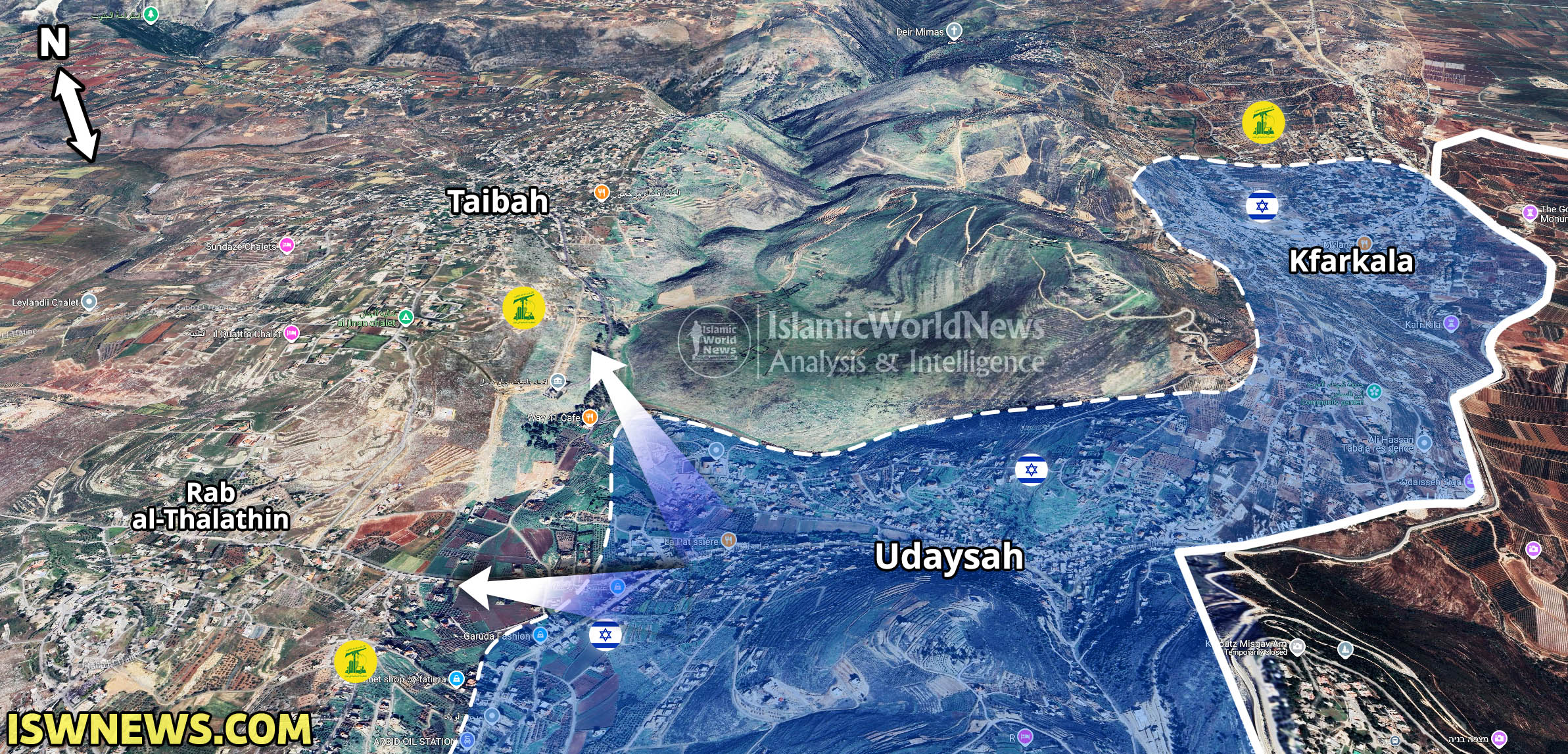
The villages of Taybeh, Rab El Thalathine, and Markaba are considered as Hezbollah’s first line of defense in this axis, and maintaining this line is crucial, when it comes to the Israeli army’s subsequent movements in southern Lebanon. These areas are geographically appropriate for military operations, allowing Hezbollah to inflict heavy casualties upon the occupying forces and show strong defense by resorting to anti-tank and rocket attacks.
Read more:
Latest Military Situation in Markaba, Rab Al-Thalathin
Israeli Army Attacks Continue In Rab Al-Thalathin And Taibah (Map)
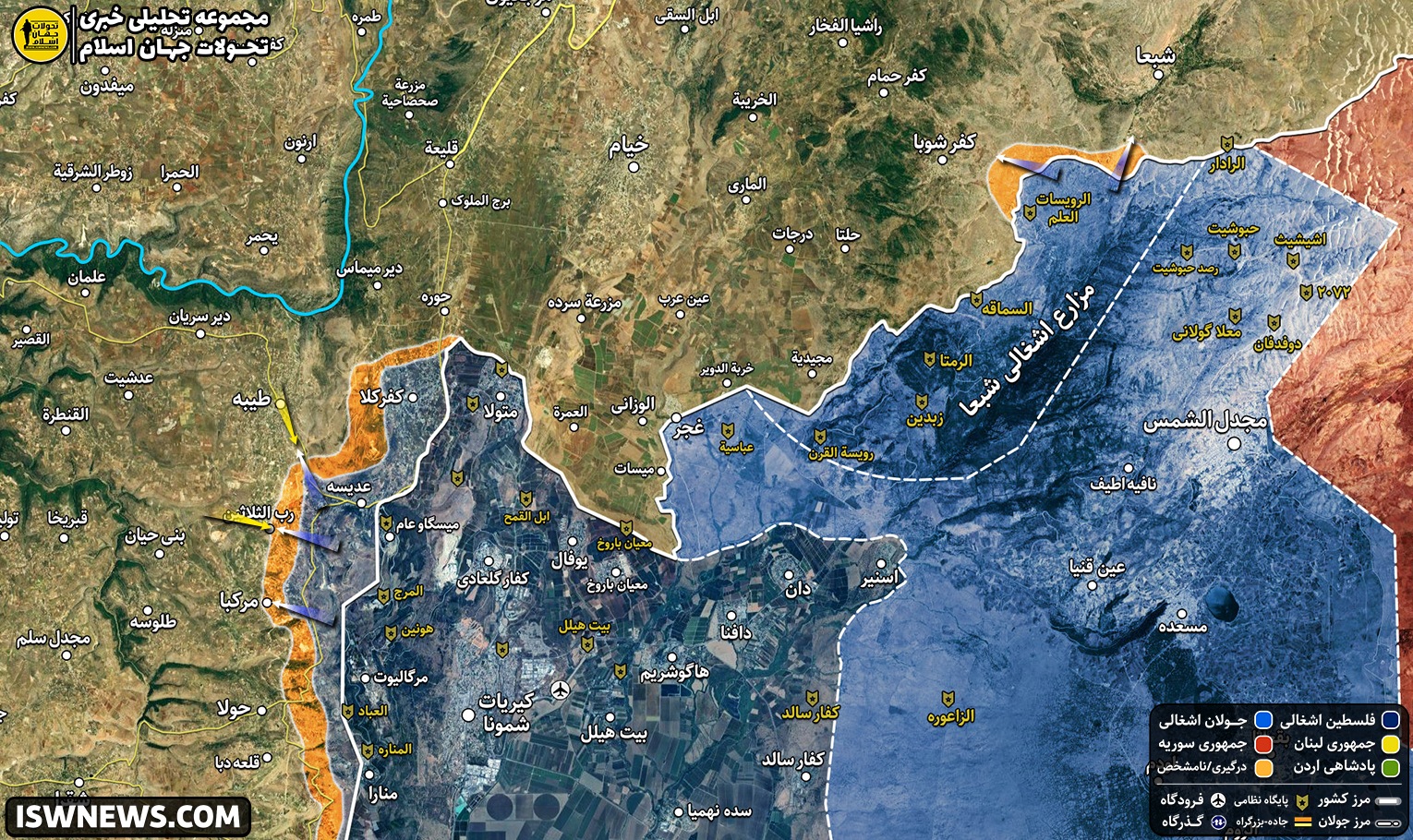
Houla-Blida Front: After completing operations in Mhaibib and Blida fronts, the 91st Brigade of the Israeli army moved toward Houla and reached the eastern areas of this village in their latest attacks. However, most buildings in this village have been damaged in the Israeli artillery and air strikes over the past year, and other buildings have been evacuated due to the war circumstances.
In the west of the Meiss Ej Jabal village, scattered armed confrontations continue within its neighborhoods, but there is no reliable news regarding the latest situation in this area. Given the Israeli army’s movement toward Houla village, it is likely that the destruction of buildings in the northern and eastern areas of Meiss Ej Jabal has been completed.
In the village of Blida, satellite images show that bulldozers and cranes of the Israeli regime’s army have ruined more than 152 buildings in this border village. Blida is one of the southeastern border villages of Lebanon and part of the Marjaayoun town in the Nabatieh Governorate, which also had an old and beautiful mosque, now the satellite images show its destruction. The Israeli regime’s army has even spared no mercy for the Blida cemetery, because its forces destroyed graves of the Muslims.


In another video from southern Blida, troops from the 920th Battalion of the 769th Brigade of the Israeli army are seen blowing up a large poultry farm on the southern borders of Blida. The owners of this poultry farm state that it was the largest livestock and poultry breeding center in southern Lebanon, raising tens of thousands of chickens. They had intended to relocate the chickens to other areas of Lebanon before the outbreak of ground warfare, but direct threats from the Israeli army prevented them from doing so. Such actions by Israeli military forces are in line with statements made by Yoav Gallant, the Israeli war minister, regarding the necessity of launching an economic and military campaign against Hezbollah and Lebanon.
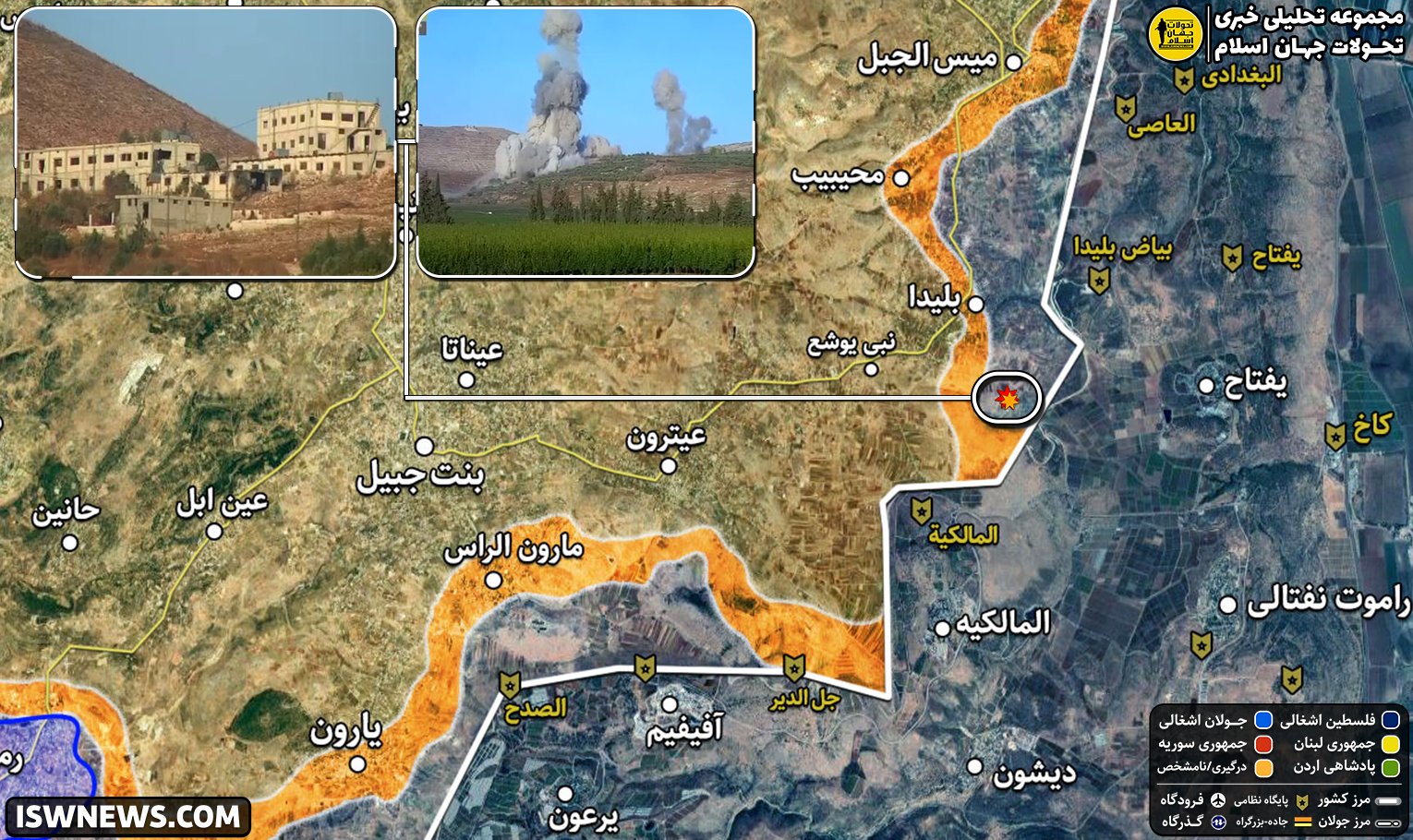
Aitaroun-Ramyeh Front: The Israeli regime’s army has successfully entered the Aitaroun town from the eastern axis, and clashes are currently ongoing in the western half of this town. The situation is similar in the Maroun El Ras village, where Israeli village are attempting to advance deeper into Maroun El-Ras and toward the southern entrance of the Bint Jbeil town.
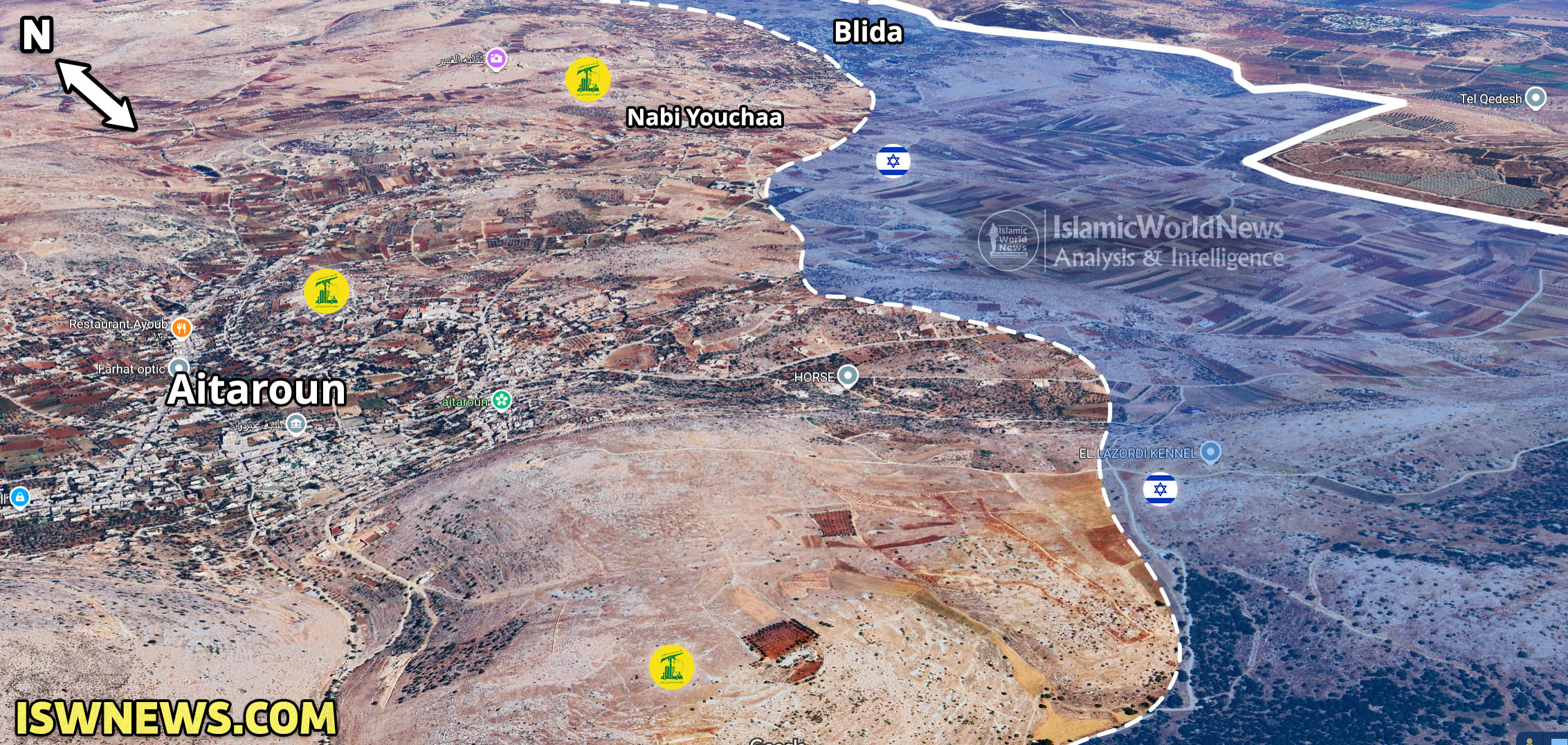
Heavy fighting is taking place in Ayta ash Shab village, particularly in the northern and eastern neighborhoods of this area, with the Israeli army conducting heavy attacks over the past two days to destroy Hezbollah positions on Aboullaban Hill east of Ayta ash Shab. Most buildings in Ayta ash Shab village have been destroyed in airstrikes, and despite the betrayal of the Christian villagers of Rmaych, Hezbollah fighters remain in the village and continue to defend it.
Hezbollah fighters are targeting Israeli gatherings and movements in this axis with rocket and artillery attacks, inflicting heavy casualties on the Israeli occupiers. However, these attacks are not sufficient to halt the Israeli war machine, as the combination of airstrikes along with bulldozer and crane activities on the ground is allowing the regime’s military forces to advance in the border areas of southern Lebanon.
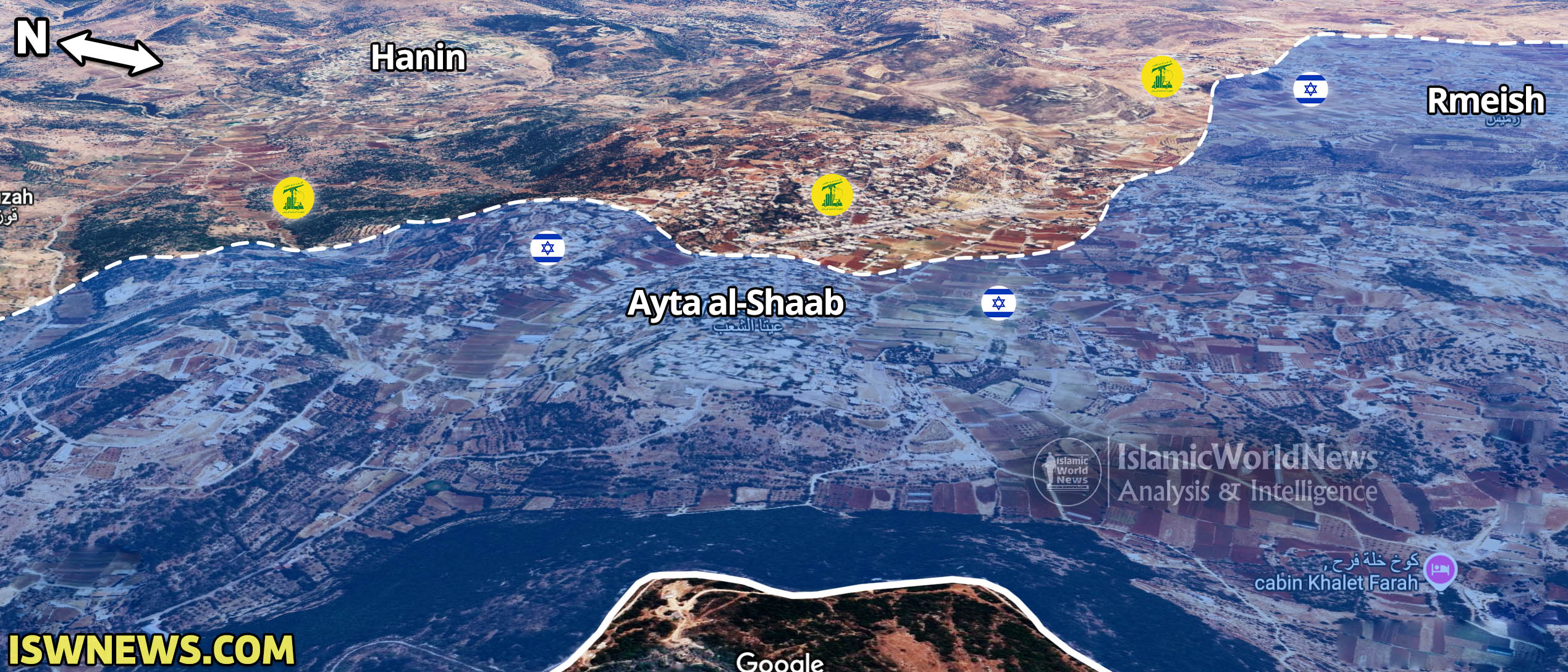
Given the direction of attacks by the Israeli 36th Brigade in Aitaroun and Maroun El-Ras, it appears that the Israeli regime’s main objective in this axis is to reach the Bint Jbeil village. In addition to Aitaroun and Maroun El-Ras, the movement of Israeli military forces along the Rmeish-Ain Ebl road (Christian villages) poses a significant threat to Bint Jbeil and could effectively encircle this small area.

Marwahin-Ras Al Naqoura Front: In the Marwahin-Ras Al Naqoura front, no significant ground movements from the Israeli army have been observed, with most of their activities focused on air and artillery attacks.
According to a statement from Hezbollah’s operations command room, the total Israeli casualties, based on observations by resistance fighters, exceed 70 killed and more than 600 wounded, including officers and troopers of the Israeli regime’s army. Additionally, 28 Merkava tanks, four military bulldozers, one armored vehicle, one personnel carrier, three Elbit Hermes 450 drones, and one Elbit Hermes 900 drone have been destroyed in the course of 23 days of ground combat. This count does not include casualties inflicted on the Israeli enemy in bases and camps in northern and deep inside occupied Palestine.
This level of casualties and damage significantly impacts the continuation of the clashes, especially if Hezbollah can execute guerrilla warfare, infiltrate occupied territories, or utilize devastating weapons in ground battles. The first phase of the Israeli army’s ground operation aims to create a security buffer zone in Lebanese territory, but what will determine the future of the war is Hezbollah’s response in ground combat and the extent of casualties and losses suffered by the Israeli regime at this stage of the confrontation.


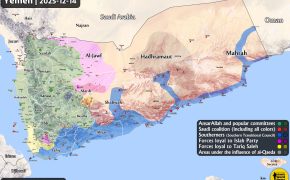
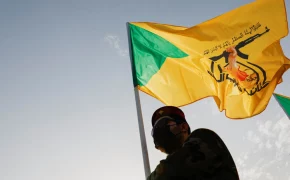
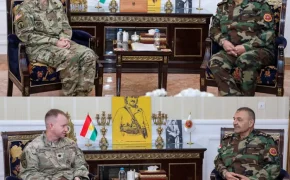
Comment